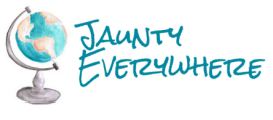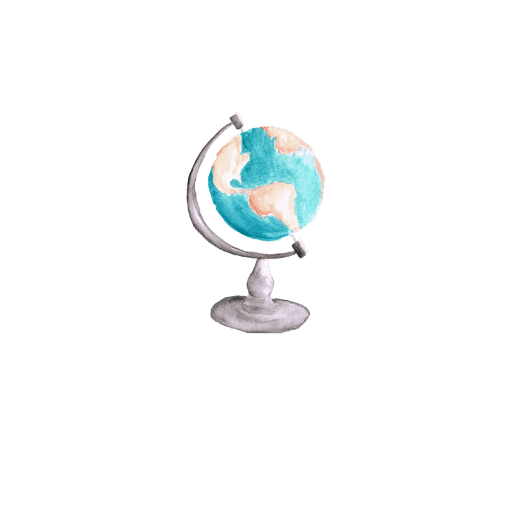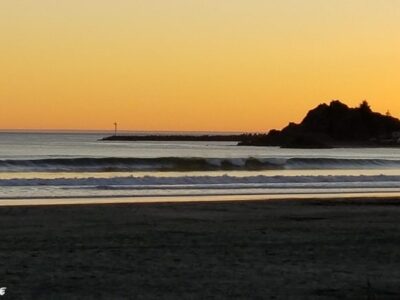How to Make the Most of Redwoods National Park
The protected Redwoods National Park of northern California stretch out over 132k acres and wind along 50 miles of California coastline.
That’s a lot of ground to cover.
Unlike many other National Parks, you don’t “arrive” at the Redwoods – you explore it.
There’s an incredible diversity of landscapes, plants, and wildlife. One minute you can be on the beach the next you are deep in a dense forest of giant trees.
Redwoods National and State Parks is cooperatively managed by Federal and State agencies, including; Redwood National Park, Jedediah Smith Redwoods State Park, Prairie Creek Redwoods State Park, and Del Norte Coast Redwoods State Park.
As a whole, these parks are also a designated World Heritage Site and an International Biosphere Reserve.
If you’re interested in the National Park Passports, check out all these fun ideas and products in the Amazon store…

4 things to do at Redwoods National Park
One
Visitor Centers
There are several visitors centers to choose from.
Hiouchi Area is the best place to start if you are coming from the north. Exhibits, trail maps and ranger advice will get you going in the right direction.
Kuchel Visitor Center is the first stop for those coming from the south.
Park Headquarters is in Crescent City and also offers information and permits.
Also, be on the lookout for Prairie Creek Visitor Center, and Jedediah Smith Visitor Center.
Two
Hiking Redwoods
There are over 200 miles of hiking trails to choose from.
A resource I found invaluable:

Rangers at the visitor centers are a treasure of information and advice.
A few representative hikes (easy):
Lady Bird Johnson Grove (1.5 miles) – the interpretive signs tell the history and ecology of the park. This trail gets crowded.
[add table]
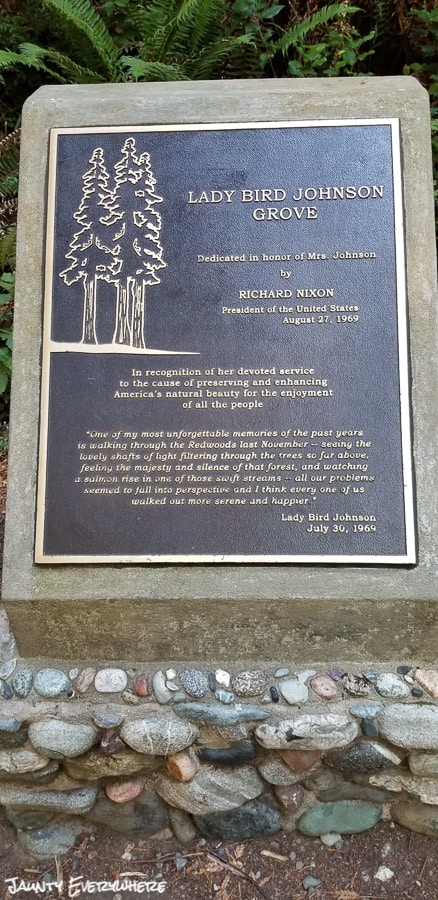
In Jedidiah State Park we enjoyed the Stout Grove Loop. This is a very short hike – about 0.5 miles. Stout Grove is home to many beautiful specimens, uprooted trees, and interesting characters.
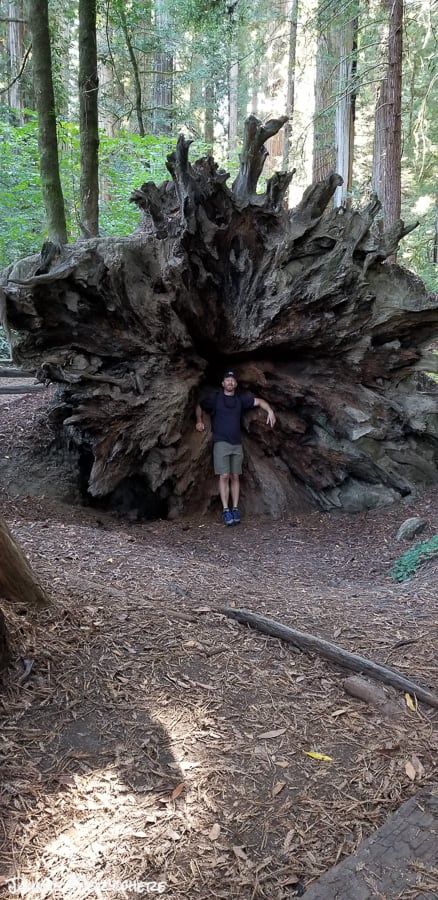
See if you can find this guy…
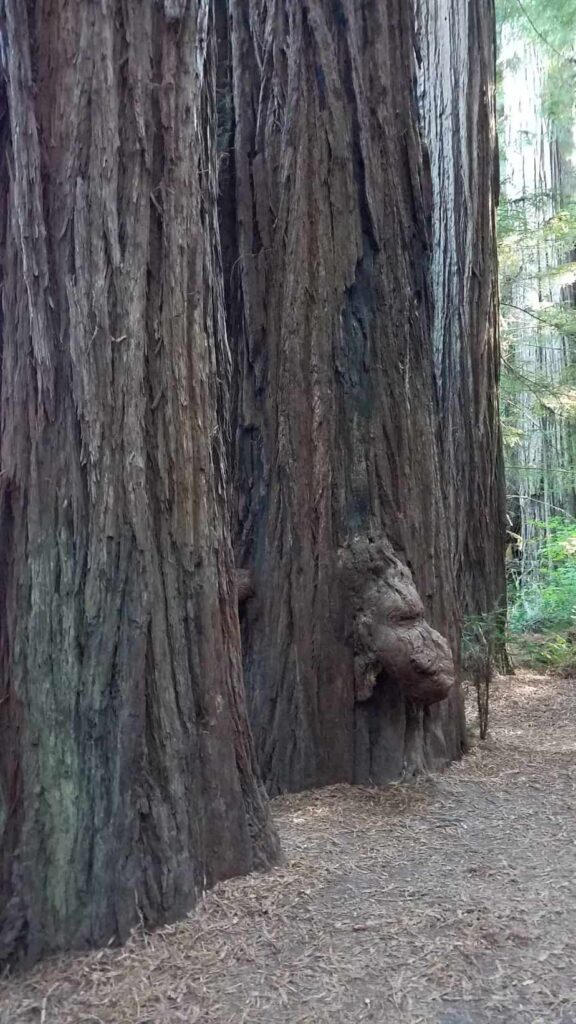
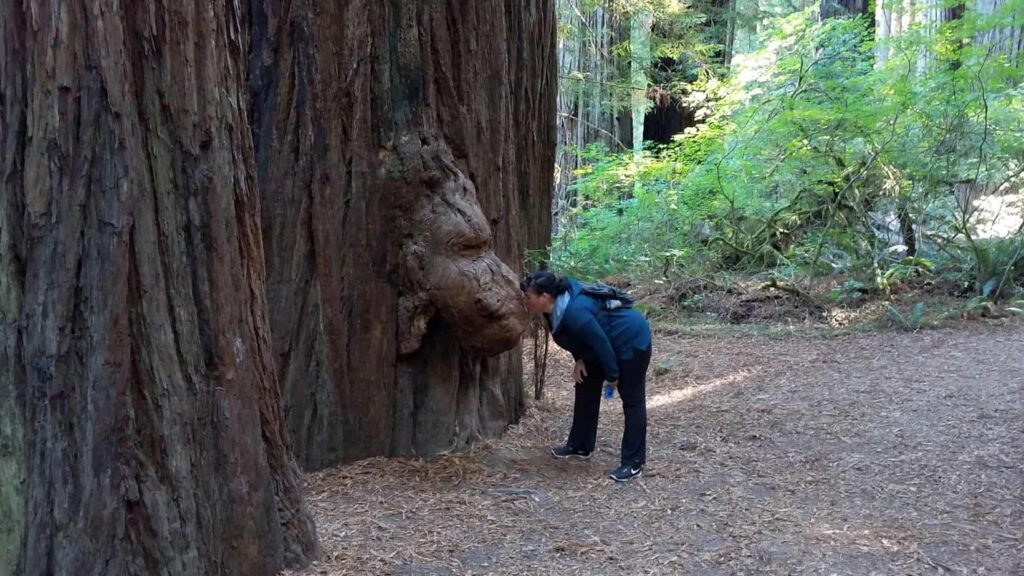
Note:
Tall Trees Grove (3.2 miles) is one of the most famous trails in the Redwoods. Because of its popularity, the NPS limits daily permits to 50. The access road is padlocked. Permits are issued on a first-come, first served basis at the Kuchel Visitor Center and Crescent City Information Center.
This is a tiny sample of the dozens of trails to choose from. You will want to do some homework and identify top picks. Knowing which areas of the park you want to focus on will help determine where to set up home base.
Three
Ranger talks
Programs are available in the high-season – May to mid-September.
Check out:
Junior Ranger Program
Tidepool Walks
Kayak tours of Smith River
Campfire programs
Nature walks
[add a table]
Four
Beaches
When I think of Redwood National Park, I’m thinking about trees.
We were surprised to find so many beautiful beaches.
The coastline is dotted with oodles of state parks and recreation areas.
Crescent City tops the list with Point St. George and Crescent Beach. Both sandy stretches of coast great for walking, lounging and sunsets.
At Crescent Beach, just 2 miles from the town center, we enjoyed watching surfers, paddle boarders, and horses each evening.
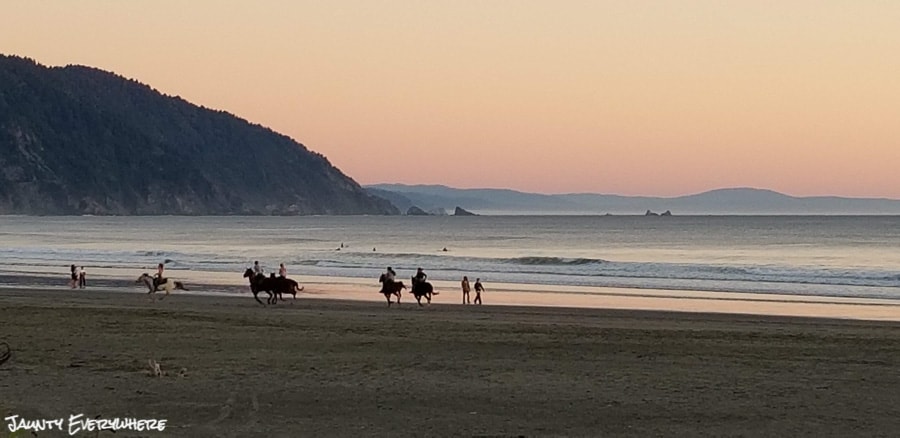
Enderts Beach Road will take you to an overlook, with beautiful views of the coastline. A 1.2-mile trail runs along the bluffs and drops down to Enderts Beach.
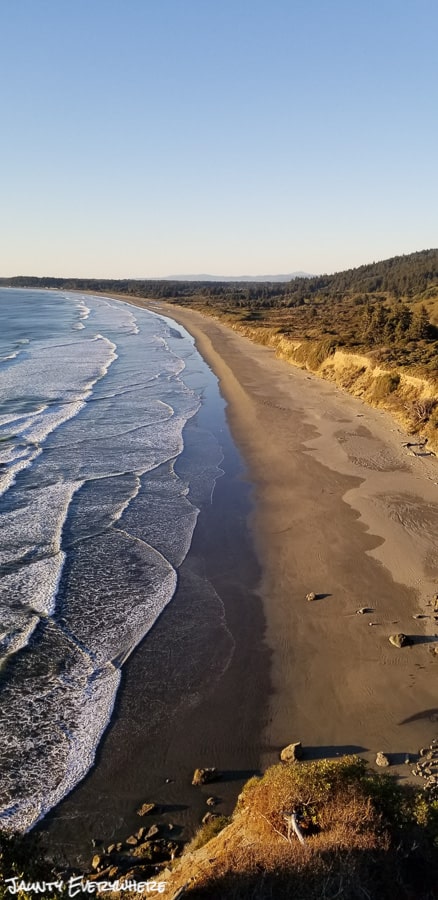
Another good stop is the beach adjacent to Kuchel Visitors Center. If you are visiting Lady Bird Johnson Grove the visitors center and beach make a good place for a picnic.
We sat against a driftwood log and ate our lunch overlooking the ocean. No reservations are necessary.
Do you want the best resources, tools, and inspiration for PNW Travel?
Every week we send an email chock full of travel inspiration for you to explore.
One week we focus on a PNW town that’s Worth a Stop; the following week, we focus on a travel-related topic to help you get the most out of your vacations.
Get an education at Redwoods National Park
Learn about redwood trees
Redwood and Sequoia trees are unique and fascinating.
Learning what makes the trees special will enrich your visit to the park.
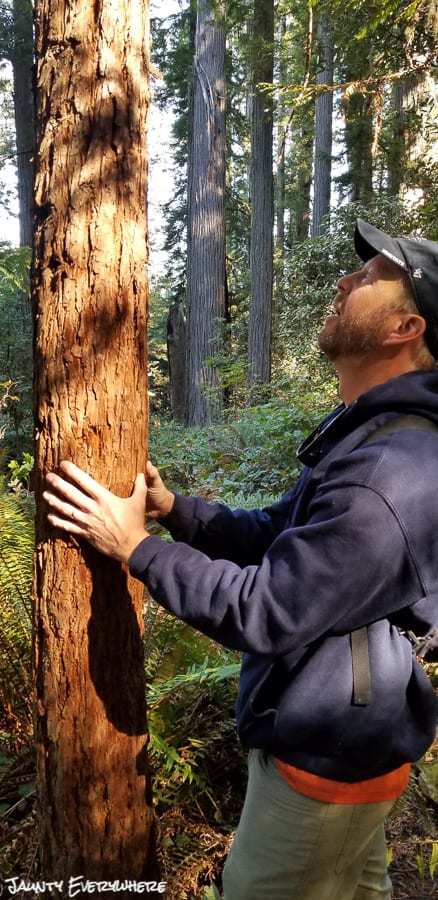
Instead of “just seeing trees” you will appreciate the beauty and natural history around you in a deeper way.
The best place to start is the NPS website.
The website learning center offers videos, photos, science and history information.
You can also find information on the Junior Ranger Redwood EdVentures program.
Check out Jason Chin
Redwoods by Jason Chin is a fun nonfiction picture book.

It’s a children’s book of course, but I learned a lot!
Also, check out the education page on Chin’s website, there’s a list of activities.
The Wild Trees
The Wild Trees: A Story of Passion and Daring by Richard Preston follows a group of young botanists and naturalists as they attempt to climb the world’s largest trees.

In the process, they discovered an ecosystem hidden in the canopy of the forest.
This is a non-fiction narrative telling the story of the climbers, their passion for the trees, and what they discover.
You will wish you could see the rich world at the top of those trees, but knowing it’s there is a close second.
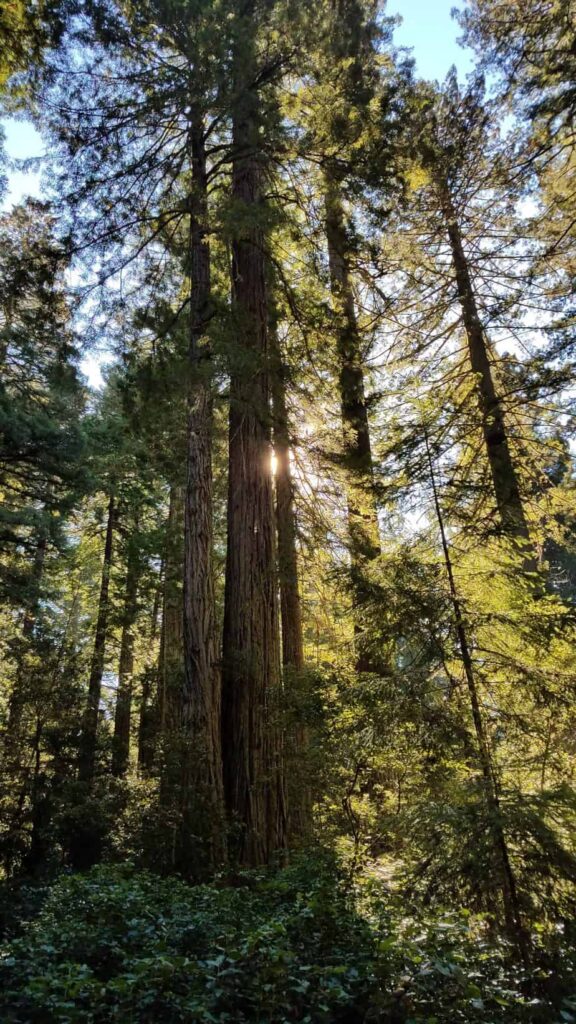
Everything you need to know about visiting Redwood National Park
Where is Redwood National Park?
Northern California
Stretching 50 miles along the coast.
Crescent City on the north end, and Eureka bookend the park.
Getting to Redwood National Park
When is the best time to visit The Redwoods?
May to mid-September is high-season.
It will be crowded, but if warm weather and beach life are important to you, stick to those months.
We went in early October and it was warm – 70’s, approaching 80 degrees.
However, due to the coastal climate, fog, rain, and wind can be an issue.
In winter, if you don’t mind chilly, wet weather, you may have the park to yourself.
Check the current conditions page for closures due to ice, landslides, flooding and falling trees.
No matter when you go, hiking in the dense forest can get chilly.
Bring layers relative to the season.
See our Pacific Northwest Itinerary: 12 Day Road Trip
Cost of admission at Redwood NP
There is no cost to enter the National or State Redwood Parks.
Gold Bluffs Beach – Day Use charges an $8.00 fee.
Accessibility in Redwood National Park
For complete information visit the NPS accessibility page.
Many areas of the Redwood park system are fully accessible.
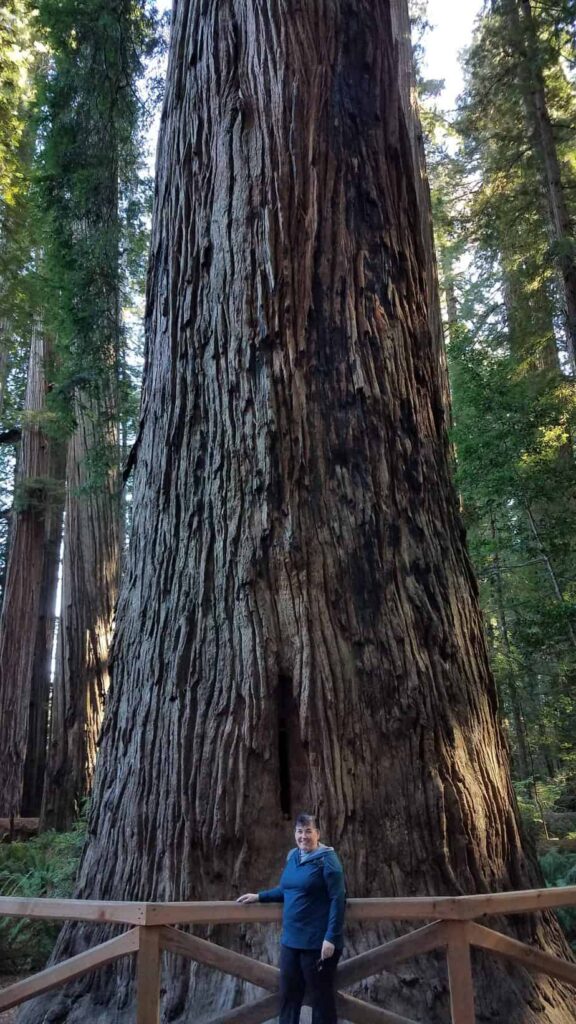
How many days do I need at Redwood National Park?
You could drive along Hwy 101 and make a few quick stops on your way through from point A to point B.
(Refer back to the hiking section at the top of this post for a few quick hikes.)
To do the park justice, see a few different areas, and hike you will need a few days.
And, I’m sure avid hikers could happily spend a week or two camping and exploring.
Other tips for Redwood National Park
There are some designated bike trails within the park.
Where to stay on my Redwood visit?
In the park:
Camping is your only option within the park limits.
Here is all the information you need to make that happen.
Outside the park:
There are a variety of hotels, especially in Crescent City and Eureka, from beachfront rooms to sketchy drive-in motels.
I suggest you give Airbnb a try.
There are rental opportunities dotted along the coast ranging from a spare bedroom to entire luxury vacation homes.
We stayed in a private room w/bath in Crescent City. It was comfortable and economical.
As a bonus, our hosts were helpful with information on restaurants, and other not-to-miss sightseeing.
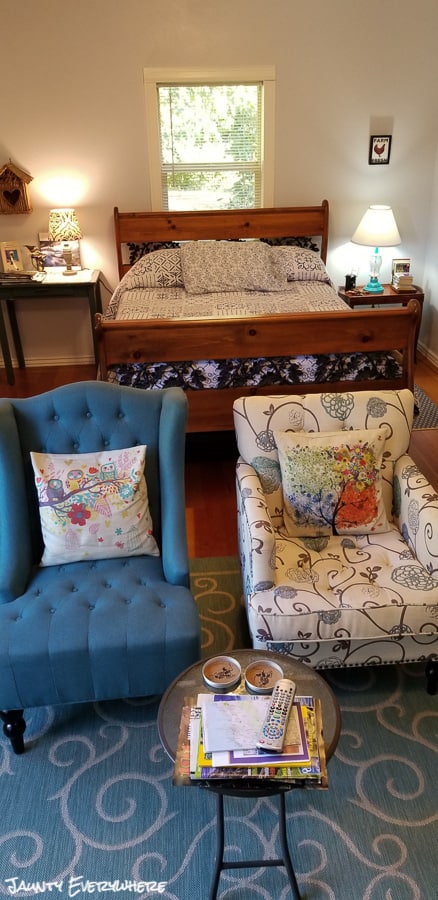
Where to eat near Redwood National Park
In the park:
Outside the park:
There are few (no) places to buy food inside the park boundaries.
Eureka will have the most options, it’s about 20 miles south of the southern end of the park.
You will find restaurants in the small towns surrounding the park.
On the north end, Crescent City has the best selection of grocery stores and restaurants.
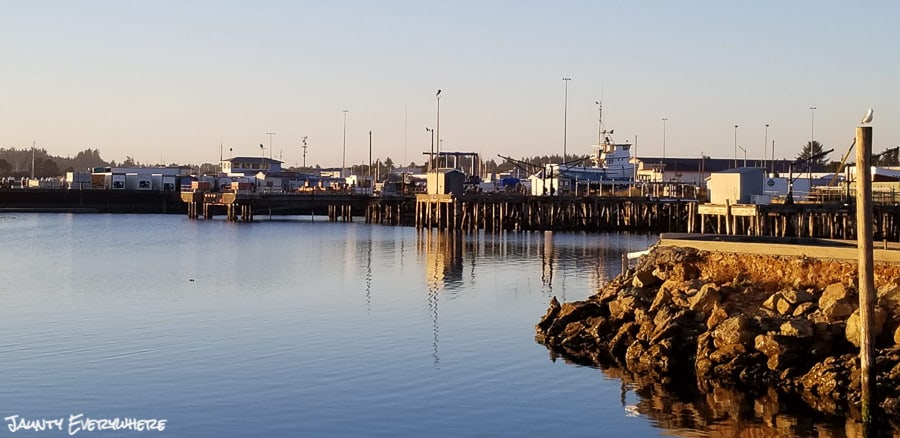
Redwood National Park itineraries
What if I only have 1 day?
There are designated natural areas galore – state and county parks, recreation areas, wild rivers, and wildlife preserves.
Crescent City is a great home base and offers a few cultural attractions – Battery Point Lighthouse Museum, Del Norte Historical Society, and the Northcoast Marine Mammal Center.
In Trinidad, you can visit the Trinidad Museum and Humboldt State University Marine Lab.
On the south end, the City of Eureka has a lot to offer.
Other interesting stops to explore are Ferndale, Arcata, Willow Creek, Orick, McKinleyville, and Klamath.
